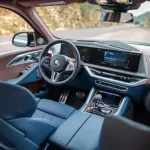Noise reduction in car interiors has become a critical consideration for automakers and drivers alike. A quiet and peaceful cabin enhances driving comfort, reduces stress, and improves the overall driving experience.
In this article, we’ll delve into the importance of noise reduction in car interiors, the factors contributing to cabin noise, and the innovative technologies and design strategies used to create a quieter and more enjoyable ride.
1. The Significance of Cabin Noise
Cabin noise, often referred to as road noise, wind noise, or engine noise, is the collective sound generated from various sources both inside and outside the vehicle. Excessive cabin noise can be intrusive, leading to driver fatigue and reduced comfort, particularly on long journeys. Reducing cabin noise is crucial for creating a pleasurable and peaceful driving environment.
**2. Sources of Cabin Noise:**
– **Road Noise:** Noise generated by the interaction between the tires and the road surface is a significant contributor to cabin noise. Different road textures, pavement conditions, and tire types can affect the level of road noise.
– **Wind Noise:** As a vehicle moves through the air, it creates aerodynamic turbulence, resulting in wind noise. Design features like the shape of side mirrors, window seals, and the vehicle’s aerodynamics play a role in wind noise levels.
– **Engine and Mechanical Noise:** The engine, transmission, and various mechanical components produce noise that can penetrate the cabin. Engine design, insulation, and soundproofing materials influence the amount of mechanical noise.
– **Exhaust Noise:** The exhaust system emits noise, particularly during acceleration. Mufflers and exhaust system design impact the noise level inside the cabin.
**3. Noise Reduction Technologies:**
Automakers employ various technologies and design strategies to minimize cabin noise:
– **Soundproofing Materials:** High-quality soundproofing materials, including acoustic insulation, foams, and barriers, are used throughout the vehicle’s interior to absorb and block noise.
– **Acoustic Windshields:** Some vehicles feature acoustic windshields with a layer of sound-absorbing material laminated between the glass layers to reduce wind noise.
– **Noise-Canceling Systems:** Active noise-canceling systems use microphones to detect cabin noise and emit sound waves of opposite phase through the speakers, effectively canceling out unwanted noise.
– **Sealing and Weather Stripping:** Proper sealing and weather stripping around doors, windows, and other openings prevent wind and road noise from entering the cabin.
– **Engine and Exhaust Design:** Engine and exhaust system design, including the use of insulated components, helps reduce engine and exhaust noise.
**4. Aerodynamics and Body Design:**
Vehicle design plays a significant role in noise reduction. Sleek and aerodynamic shapes help minimize wind turbulence and noise. Additionally, aerodynamic features like side mirrors and body panels are designed to deflect airflow away from the cabin.
**5. Tire Technology:**
Tire manufacturers are developing quieter tire designs with reduced rolling resistance. Low-noise tires feature tread patterns that generate less road noise and contribute to a quieter ride.
**6. Active Noise Control:**
Advanced vehicles may employ active noise control systems that analyze cabin noise and emit sound waves to cancel out unwanted sounds. These systems can dynamically adjust to changing noise levels, ensuring a consistently quiet cabin.
**7. Driver Assistance Features:**
Some modern vehicles are equipped with driver assistance features, such as adaptive cruise control and lane-keeping assist, which can contribute to a more relaxed driving experience by reducing the need for constant manual adjustments.
**8. Benefits of Noise Reduction:**
Reducing cabin noise offers several benefits:
– **Enhanced Comfort:** A quieter cabin provides a more comfortable and relaxed driving experience, reducing driver fatigue on long trips.
– **Improved Concentration:** Reduced noise levels improve concentration and focus, enhancing driver safety.
– **Enjoyable Listening:** Lower cabin noise allows for better audio system performance and clear communication, making it easier to enjoy music or take calls.
**Conclusion: The Quest for Quieter Interiors**
Noise reduction in car interiors is not just about creating a peaceful environment but also improving overall driving comfort and safety. Automakers continue to invest in innovative technologies and design strategies to achieve quieter cabins. As consumers increasingly prioritize a tranquil and enjoyable driving experience, we can expect further advancements in noise reduction technology, ultimately transforming the way we experience our time on the road. Understanding the importance of noise reduction and the factors contributing to cabin noise allows both automakers and drivers to work together to create a quieter and more enjoyable driving environment.


